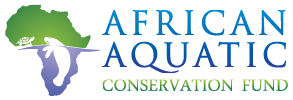On July 14 I traveled from Dakar to Banjul, the capital of Gambia, by car. I traveled with my Gambian colleague, Dawda Saine, who had flown back into Dakar after a work trip to Europe. We took a taxi to the place where you can pick up a “sept place”, the 7 person (plus driver) cars that provide local transport all over Senegal. They’re all old Renault station wagons that get loaded down with people and their luggage, and leave once they’re full, so your departure time depends on how fast the car fills. Dawda and I secured our places in a car, then waited for 4 more passengers to arrive. I was lucky to get a window seat so I could watch the countryside roll past. This is the car when we stopped for a quick break…
We drove south into the interior of the Delta Saloum region of Senegal, where long mangrove channels end in huge salt flats. In 6 hours we reached the border of Gambia, and after I cleared immigration on both sides, we took a taxi to the ferry that crosses the Gambia River. We were lucky to arrive just as the ferry was loading, so we got tickets and ran on board. People literally pack into every available inch of space. As we crossed the river the sun set, creating an eerie light through rain clouds.
Gambia is a small country surrounded on all sides by Senegal, and it’s main feature is the Gambia River, which starts in southeastern Senegal and runs through the center of Gambia to the Atlantic Ocean. Banjul sits right at the mouth of the river. I’m staying down the coast a bit in Fajara, seen at the top of the red box on the map.
My main reason for coming to Gambia was to teach a manatee research training workshop. Dawda attended manatee training at a previous workshop in Ghana several years ago, then came to Florida last winter for advanced training in necropsy and other field techniques. Now he wants to continue to try to build a network for manatee research in the Gambia, so I’m here to train 6 other colleagues and hopefully see some manatee areas to help them start thinking about study sites. The first day after I arrived, we visited the Gambia Parks and Wildlife office, and I met some people there who I’d been talking to online for several years but had never previously met in person. In meeting with the Director and several of the other folks there, we decided that this training workshop would be made up entirely of staff from Parks and Wildlife, since some of them had already received some basic manatee training.
We had 2 days of lectures that focused on fieldwork/survey techniques and sample collection, and I included some interactive activities such as practicing standard measurements (no real manatees or even an inflatable toy manatee available, so we used my inflatable orca again). Even though it’s not the real thing, I find that just having the opportunity to do measurements on a 3D scale gives the guys a much better understanding of how to accurately take the measurements in the correct standardized way. We talked about the realities of doing a necropsy (because manatees are heavy and hard to manouevre if you’ve never done it before!). We also went over equipment and how to use and care for it.
On the last day of the workshop we took a boat out to Tanbi natural reserve, a protected area of mangrove habitat near Banjul. Everyone had the chance to practice using the field equipment, to collect environmental data, and to look for manatee feeding sign. We also visited several freshwater springs where manatees have been sighted in the past, but didn’t see any (not surprising though, because we were there at mid-day and manatees here are mostly seen at dawn, dusk and night). This trip was more to focus on the skills they’ll use when they conduct their own surveys.
Dawda shows Lamin how to use the refractometer (which measures water salinity) while Musa and Fabala look over their datasheets.










